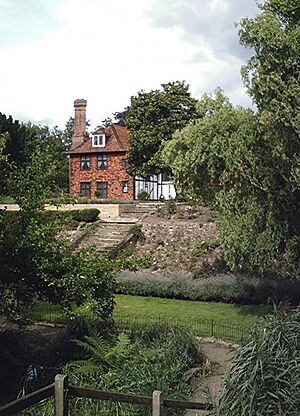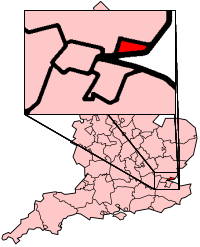Richard de Southchurch facts for kids
Sir Richard de Southchurch (died 1294) was a brave knight and an important landowner in Essex, England, during the 1200s. He served as the High Sheriff of Essex and Hertfordshire from 1265 to 1267. During this time, he became involved in a big conflict called the Second Barons' War (1264–1267). Sir Richard is remembered in history for a strange story from the war: he supposedly planned to attack London using roosters with fire tied to them!
Contents
Who Was Sir Richard de Southchurch?
Not much is known about Sir Richard's early life. His family came from a place called Southchurch, which is now part of Southend-on-Sea. Richard de Southchurch owned this land, which he held from the church leaders in Canterbury. He also owned other lands in Essex, including Prittlewell.
Sir Richard's Role as Sheriff
Sir Richard was the sheriff for both Essex and Hertfordshire from October 1265 to June 1267. A sheriff was like a top law enforcement officer and a representative of the king in a county. It was a very important job!
In 1279, he was cleared of a fine for being present when a deer was taken from the king's forest. Later, in 1289, he was also cleared of a large sum of money he owed. This happened after he gave the land of Hatfield Peverel to the king. Sir Richard de Southchurch passed away by April 1294. After his death, his lands were given to his son and heir, Peter de Southchurch.
Sir Richard and the Barons' War
In the middle of the 1260s, England was in a civil war. This war was between King Henry III and some powerful noblemen, and it was known as the Second Barons' War.
The Attack on London
In April 1267, a nobleman named Gilbert de Clare led the rebel forces into London. The people of London welcomed him. King Henry III then set up his army outside the city, trying to take it back.
As sheriff, Sir Richard de Southchurch was ordered to gather supplies for the king's army. He collected many things from the local area, including:
- Oats and wheat for food.
- Bacon, beef, cheese, and peas to feed the soldiers.
- Chickens to help feed the wounded.
- Materials for medical dressings, like tow and eggs.
- Linen for bandages.
- Ropes for catapults.
- Tools like picks and spades to help break down London's walls.
The Rooster Plan
The most unusual item Sir Richard collected was "forty and more" roosters. He claimed he would tie fire to their feet and send them flying into London to burn the city down!
This strange story comes from the Hundred Rolls. These were official records made by King Edward I in 1274-1275. The records show that people complained about Sir Richard. They said he took all the supplies to his own home and received money from the king, but he never paid the people he took the goods from.
Some historians think the idea of using fire-carrying roosters might have come from old Viking stories. However, it seems the plan was never actually carried out. It might have just been a clever trick by Sir Richard to get more money and supplies for himself!
How We Know This Story
The story of Sir Richard and his roosters became known to many people thanks to the English historian Helen Cam. She did a lot of important work on the Hundred Rolls in the early 1900s. She called the rooster story "the most picturesque series of extortions" recorded in the Essex area.
Another historian, Sir Maurice Powicke, also retold the story in his book about King Henry III. For a long time, people thought of it as a funny anecdote. However, in 1988, historian Michael Prestwich suggested that the rooster story might have been a "confidence trick" by Sir Richard. This means Sir Richard might have made up the wild plan to trick people into giving him supplies and money.
See Also
- Olga of Kiev (another historical figure known for using birds in a siege)



